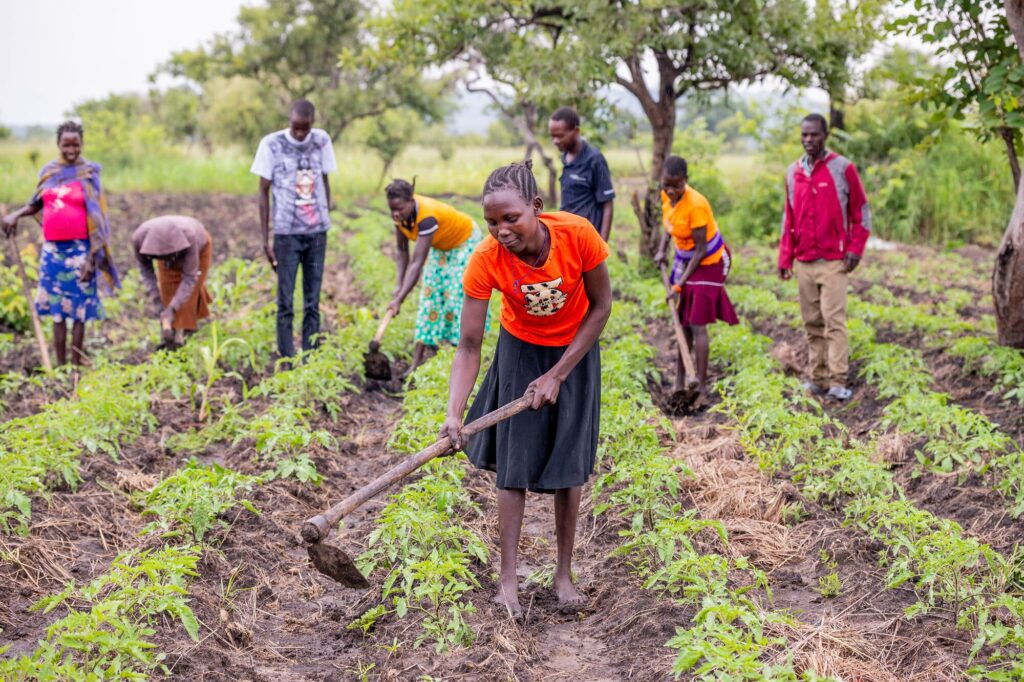
Is Tipping Expected in Uganda? | Experiya Tour Company
October 29, 2025
Attending Local Church Services in Uganda | Experiya Tour Company
October 29, 2025What Should I Wear When Visiting Rural Uganda?
When planning a trip to Uganda — the Pearl of Africa — one of the most common questions travelers ask is: What should I wear, especially when visiting rural areas? Uganda is a beautiful country full of contrasts — lush green hills, tranquil lakes, bustling towns, and peaceful villages. While urban centers like Kampala and Entebbe are fairly cosmopolitan and relaxed about fashion, rural Uganda is more conservative, guided by tradition, community values, and cultural modesty.
Dressing appropriately in rural Uganda is not only a matter of comfort but also one of respect. The clothes you choose can shape the way locals perceive you, influence how warmly you’re received, and determine how comfortable you feel in different environments. This guide explores what to wear when visiting rural Uganda, covering everything from cultural expectations and climate to practical tips for different activities.
Understanding Uganda’s Climate and Culture
Before deciding what to pack, it helps to understand Uganda’s climate and culture. Uganda sits near the equator, which gives it a tropical climate — warm but not excessively hot, thanks to its high altitude. Most regions enjoy two rainy seasons (March to May and September to November) and two dry seasons (December to February and June to August). Temperatures generally range between 18°C and 30°C (64°F–86°F), but nights in highland areas can be cool.
Culturally, Uganda is modest and family-oriented. In rural areas, community life revolves around shared respect, religion, and tradition. The way you dress communicates your understanding of these values. Revealing or tight-fitting clothing can sometimes be viewed as inappropriate or disrespectful, especially in villages and during interactions with elders.
However, there’s no need to overthink or feel restricted — Ugandans are famously friendly and welcoming. The key is to dress comfortably, practically, and modestly while keeping in mind local customs.
General Dressing Guidelines for Rural Uganda
1. Modesty is Appreciated
In rural Uganda, modesty in dress is a sign of respect. For women, this means wearing skirts or dresses that reach at least below the knee and avoiding low-cut tops or clothing that exposes too much skin. Trousers are acceptable in most areas, especially for activities like hiking or traveling, but overly tight or short clothing can attract unnecessary attention.
For men, simple collared shirts, T-shirts, and long trousers or jeans are appropriate. Shorts are fine for casual settings, but in some conservative regions, long trousers are preferred, especially when meeting elders or attending community gatherings.
2. Lightweight and Breathable Fabrics
Uganda’s tropical climate can be warm during the day, so light, breathable fabrics like cotton and linen are ideal. These materials keep you cool while offering coverage from the sun. In higher altitude regions such as Kabale, Kisoro, or Fort Portal, mornings and evenings can be chilly, so it’s wise to bring a light sweater or jacket.
3. Neutral or Earthy Colors
Bright neon or flashy colors tend to stand out and are rarely worn in rural Uganda. Neutral tones like khaki, beige, olive, brown, and cream are both practical and respectful. They’re also perfect for blending into nature, especially if you’re visiting wildlife areas or national parks.
If you’re planning to go on a safari, avoid dark blue or black clothing as these colors attract tsetse flies.
4. Comfortable Footwear
Village visits often involve walking along dusty paths, uneven terrain, or grassy fields. Comfortable, closed shoes or sturdy sandals are essential. Sneakers or lightweight hiking shoes are perfect for everyday exploration.
Flip-flops are fine for indoors or casual strolls, but not ideal for long walks or outdoor activities. During the rainy season, consider bringing waterproof shoes or gumboots, especially if you plan to explore farms or muddy areas.
5. Respectful Headwear
A wide-brimmed hat or cap is practical for protecting yourself from the sun, but it’s also polite to remove it when greeting elders, entering a home, or attending church services. In some rural settings, covering your hair (for women) is considered respectful, especially during religious ceremonies. A light scarf or wrap works perfectly.
What Women Should Wear in Rural Uganda
Ugandan women in rural areas tend to dress conservatively in colorful dresses, skirts, or gomesi — a traditional garment worn during cultural events. Visitors don’t need to adopt traditional wear, but modest, comfortable clothing that aligns with local norms is highly appreciated.
Here’s a practical wardrobe guide for women visiting rural Uganda:
- Tops: Light blouses, T-shirts, or long-sleeved shirts. Avoid see-through fabrics or tops with plunging necklines.
- Bottoms: Midi or maxi skirts, loose-fitting trousers, or long dresses. Knee-length and below are ideal for village settings.
- Dresses: Casual cotton dresses work well for both comfort and modesty.
- Outerwear: A light jacket or cardigan for cool evenings.
- Shoes: Closed walking shoes, sneakers, or sandals with good grip.
- Accessories: A scarf or wrap for covering your shoulders or head when necessary.
If you’re visiting a church, mosque, or cultural ceremony, dressing modestly is especially important. Women are often expected to cover their shoulders and legs.
What Men Should Wear in Rural Uganda
Men’s clothing in rural Uganda tends to be practical, simple, and neat. Locals often wear collared shirts, T-shirts, or button-downs paired with trousers. When visiting rural areas, dressing respectfully helps you blend in and shows cultural sensitivity.
Recommended items for men include:
- Shirts: Lightweight, collared shirts (short- or long-sleeved) are great for both comfort and respectability.
- Trousers: Long trousers or jeans are preferred over shorts in formal or village settings. Shorts can be worn during casual activities or hikes.
- T-shirts: Simple, clean T-shirts are fine, but avoid those with offensive or political prints.
- Shoes: Closed walking shoes, loafers, or durable sandals.
- Jacket: A light sweater or windbreaker for evenings or highland regions.
When meeting elders, attending a community function, or visiting a home, it’s polite for men to appear tidy, with shirts tucked in and hats removed.

Special Situations and What to Wear
1. Visiting a Village Home
If you’re invited into a family’s home, dress modestly. For women, a skirt or long dress is most appropriate; for men, a collared shirt and trousers. Always remove your hat before entering the house, and if you’re offered a seat, wait until you’re shown where to sit — a gesture of respect.
2. Attending Church or Religious Gatherings
Ugandans are deeply religious, and attending church is a central part of village life. Women should wear dresses or skirts below the knee and cover their shoulders. Men should wear shirts (preferably collared) and long trousers. Avoid wearing hats inside religious buildings.
3. Exploring Markets or Community Events
Village markets are lively and colorful places where modest but practical attire is best. Comfortable shoes and breathable clothing are a must. Carry a light bag or backpack for your purchases and keep valuables secure but discreet.
4. Volunteering or Participating in Community Work
If your visit involves community projects such as teaching, farming, or volunteering, wear clothes that can get a little dirty. Loose-fitting trousers, simple shirts, and durable shoes are ideal. Modesty still applies — avoid sleeveless tops or shorts above the knee.
5. Evenings and Social Gatherings
Evenings in the village are cooler and more relaxed. A casual long-sleeved shirt or dress paired with a light sweater is perfect. Mosquitoes are more active after sunset, so wearing long sleeves and trousers helps protect you from bites.
Practical Packing Tips
- Bring a rain jacket or poncho, especially if traveling during the wet season.
- Carry a shawl or wrap — it’s versatile and can serve as a cover-up, scarf, or even blanket during travel.
- Avoid camouflage prints, as they are reserved for military use in Uganda.
- Pack culturally neutral clothing without slogans or political messages.
- Include sunscreen, a hat, and sunglasses to protect from the equatorial sun.
- Carry laundry-friendly clothes, as washing is often done by hand in rural areas.
Blending In and Showing Respect
The goal when visiting rural Uganda is not to imitate locals but to show cultural awareness. Dressing modestly and neatly signals that you respect the community’s way of life. Ugandans are incredibly welcoming, and when they see you making an effort to adapt, they often respond with warmth and curiosity.
You’ll likely receive compliments like “Olyeyo bulungi” — meaning “You look nice.” And beyond clothes, your attitude matters most. Smiling, greeting politely, and showing humility will make you feel at home wherever you go.
Why You Should Travel With Experiya Tour Company
When exploring Uganda’s rural beauty and cultural richness, traveling with Experiya Tour Company ensures that your experience is authentic, comfortable, and respectful. Experiya’s expert guides provide valuable cultural insights — including advice on local customs and appropriate dress for every occasion.
Their itineraries are thoughtfully designed to balance cultural immersion with comfort, allowing you to visit villages, meet local families, and participate in community activities without feeling out of place. Whether you’re attending a traditional ceremony, exploring rural markets, or volunteering in a community project, Experiya ensures that you’re well-prepared and culturally attuned.
Experiya Tour Company’s philosophy is rooted in connection — connecting travelers with people, traditions, and stories that make Uganda truly special. With their guidance, you’ll not only see Uganda but experience it with genuine understanding and respect.
Book your journey with Experiya Tour Company today and explore the heart of rural Uganda — where tradition, warmth, and authenticity await you at every turn.




